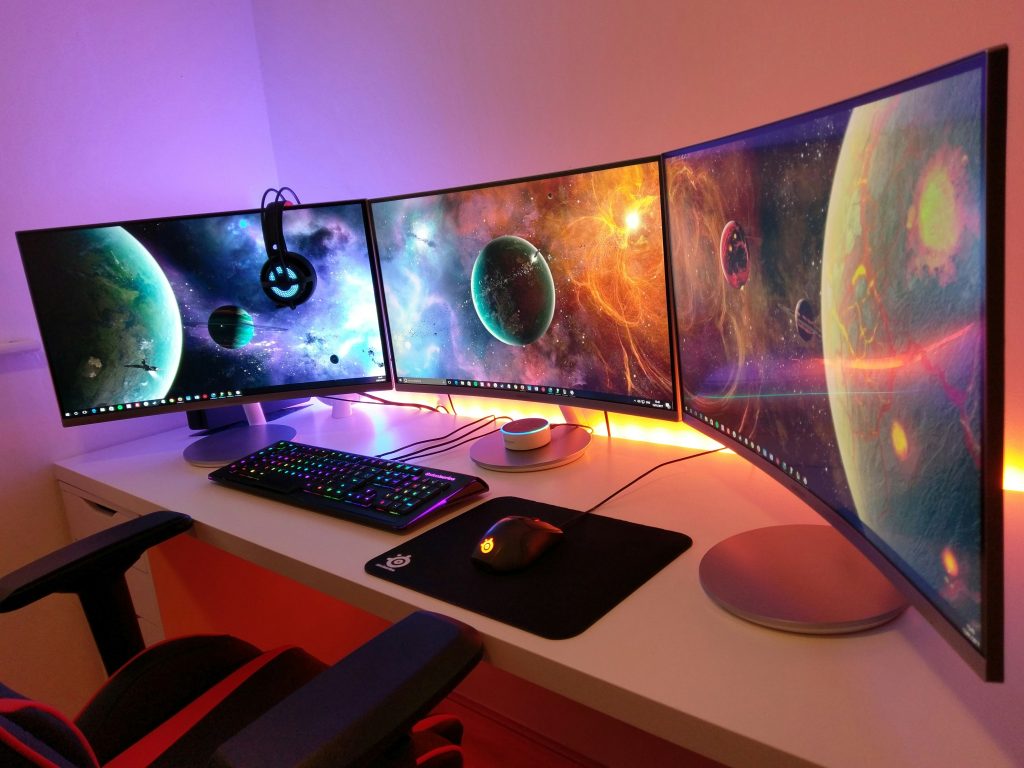Virtual Reality (VR) has come a long way since its early experiments in gaming, and the future looks even more exciting. Once considered a niche technology, VR has evolved into a mainstream gaming platform with major advancements in hardware, software, and content. As gaming technology continues to improve, VR is poised to redefine the way we experience digital worlds. But what’s next for VR gaming? Let’s take a look at the future of virtual reality and the innovations that will shape the gaming landscape in the coming years.
1. Better Performance: Photorealistic Graphics and Improved Visuals
One of the most significant hurdles for VR gaming has always been the quality of visuals. Early VR headsets had low-resolution screens and limited graphical power, which resulted in a less-than-experience. However, with the release of devices like the Oculus Quest 2 and PlayStation VR2, and upcoming models like the Apple Vision Pro, the visual quality has vastly improved.
What’s next? As VR technology advances, we can expect even more realistic graphics that bring virtual worlds closer to life. Photorealistic environments, powered by real-time ray tracing, will allow players to experience stunning landscapes, lifelike character animations, and environments that feel indistinguishable from the real world. The increased resolution, higher refresh rates, and better field-of-view will all contribute to making the VR experience smoother and more engaging.
2. Enhanced Haptics and Tactile Feedback
While visuals are crucial, haptic feedback plays a massive role in how we interact with virtual environments. Current VR controllers provide basic vibrations, but the future holds a world where tactile sensations—like the feeling of objects, weather, or even physical resistance—are a part of the gaming experience.
What’s next? Expect significant improvements in haptic feedback technology, with devices that provide nuanced, real-time physical sensations. Full-body haptic suits and gloves are already in development, allowing players to feel textures, temperature changes, and physical impacts, giving them a true sense of touch. This could range from the soft brush of wind on your face to the jarring impact of a swordfight. As VR expands, the integration of haptic feedback will provide a level of that was once only possible in science fiction.
3. AI-Powered NPCs and Dynamic Worlds
In traditional gaming, NPCs (non-player characters) are scripted and follow a set of pre-programmed behaviors. However, VR gaming has the potential to introduce AI-driven characters that react intelligently to a player’s actions, offering more dynamic and interactive experiences.
What’s next? The future of VR gaming will likely include AI-powered NPCs that can learn and adapt based on the player’s behavior, creating a truly dynamic world. These characters might remember previous interactions, respond more naturally to player choices, and contribute to a more personalized experience. Whether you’re enemies, solving puzzles, or exploring vast open worlds, the NPCs of tomorrow could feel more like real people, making every interaction unique.
4. Social VR: Connecting with Others in Virtual Spaces
In recent years, VR platforms like VRChat, Horizon Worlds, and AltspaceVR have made strides in creating virtual spaces for social interaction. While VR has always been a great way to experience games solo, it’s increasingly becoming a medium for multiplayer experiences.
What’s next? Expect social VR to become more sophisticated, with the ability to create custom virtual spaces, host events, and interact with others in ways that are as real as face-to-face conversations. As VR headsets become lighter and more affordable, there will be a shift towards creating virtual communities that can meet and collaborate in real-time, no matter where they are physically located. We might even see the rise of VR social gaming platforms where players can engage in activities like virtual concerts, sporting events, or collaborative gameplay with friends across the globe.
5. Augmented Reality (AR) Integration
While virtual reality creates environment, entirely digital worlds, augmented reality (AR) overlays digital content onto the real world. In the future, VR and AR could blend together, offering a hybrid experience that lets players interact with both their environment and virtual objects simultaneously.
What’s next? We might see mixed reality (MR) gaming systems that allow players to interact with virtual objects in their real-world environment. For example, you could have a virtual monster appear in your living room, and you could physically walk around to find it, or even interact with it using real-world objects. The combination of VR and AR could open up entirely new gameplay possibilities, blending the boundaries between the real world and the digital universe.
6. Virtual Reality and Cloud Gaming
While gaming PCs and consoles are traditionally required to run high-end VR games, cloud gaming is quickly gaining traction as a means of making gaming more accessible. Cloud gaming allows players to stream games directly from the cloud without needing powerful hardware on-site.
What’s next? The future of VR gaming could see widespread integration with cloud platforms, allowing users to access VR experiences with minimal hardware. Platforms like NVIDIA GeForce Now, Xbox Cloud Gaming, and PlayStation Now could expand to support VR titles, enabling players to enjoy VR games on devices as simple as smartphones or low-end PCs. This would make high-quality VR gaming more accessible to people without the need for expensive headsets or powerful gaming rigs.
7. Affordable, Accessible VR
Although VR gaming has made huge strides in recent years, price is still a barrier for many potential players. High-quality VR headsets like the Valve Index or HTC Vive Pro are expensive, and the required hardware (gaming PCs or consoles) can further add to the cost.
What’s next? The future of VR gaming lies in making the technology more affordable and accessible. As VR hardware becomes more mainstream, prices for headsets are expected to decrease, making them more accessible to a broader audience. Newer headsets will likely be more comfortable, wireless, and come with improved features without breaking the bank. Additionally, gaming companies may focus on making VR content more readily available, making it easier for gamers to jump into the virtual world without needing a massive investment.
8. The Rise of VR Esports
Esports has already taken the gaming world by storm, but virtual reality is set to introduce a whole new dimension to competitive gaming. While traditional esports is centered around keyboard, mouse, and controller-based gameplay, VR esports could bring entirely new types of challenges to players.

